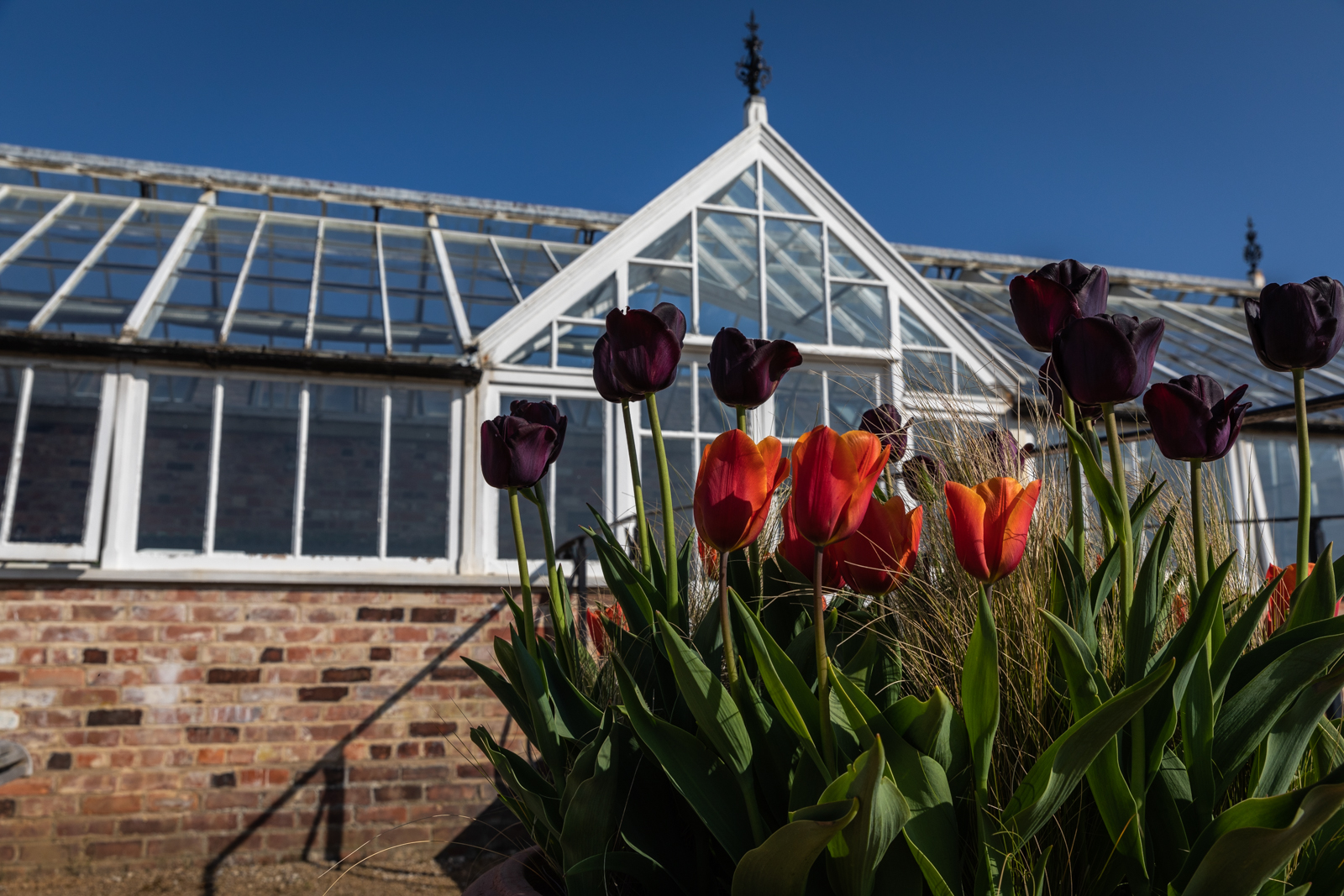Table Of Content

Procure multiple-head gooseneck lamps with LED lighting through online vendors to maximize the area for growing orchids or other plants where natural light is limited. The only orchids you can reliably grow indoors – and the ones most heavily sold – are moth orchids, or Phalaenopsis, since they require less light than the vast majority of epiphytic or tree-dwelling orchids. Nevertheless, moth orchids still need hours of good ambient light in order to thrive. Two other orchid types that you may have success growing indoors are lady’s slippers (Paphiopedilum) and the sometimes fragrant corsage orchids (Cattleya).

Master Gardener: What’s happening to our naval orange tree?
While most are tree-dwelling epiphytes, there are also lithophytes, which are species that grow on rocks, and terrestrials or ground-dwelling orchids. There are more than 20,000 orchid species, which is more than twice the number of all bird species on earth and four times the number of all mammal species. It is thus reasonable to assume that orchids may be found almost anywhere if you take the time to look for them.
Light

Watering is as simple as pouring water into the potting mix, and letting any excess drain through the bottom. Just make sure you pot your orchid in a container that has a drainage hole. It's a lot more difficult to water plants in containers without drainage because the water can collect at the bottom, so if your pot doesn't have a hole (or a few), consider repotting or drilling one yourself. Orchids have long held a prominent place at Longwood, as they were a passion of our founder Pierre S.
1-magnitude quake centered near Corona jolts Southern California
Remember to add plant food to the water as often as needed to encourage further growth. Misting your orchids regularly in the heat of summer can help them thrive too. If the leaves are drooping, you may be underwatering the orchid. In addition to root rot from overwatering, orchids also can become afflicted with various fungal diseases, such as anthracnose, phytophthora (black spots on leaves), botrytis, leaf algae, and petal blight. I recently wrote about moth orchids and solicited orchid growing tips from readers of this column.
Longwood Gardens diminutive Orchid House is about to reopen, first fruit of huge reconstruction project - The Philadelphia Inquirer
Longwood Gardens diminutive Orchid House is about to reopen, first fruit of huge reconstruction project.
Posted: Fri, 18 Feb 2022 08:00:00 GMT [source]
They produce pseudobulbs, from which new plants will grow, which makes it possible to propagate them by division at the roots. However, keep them in their pots as long as possible since crowded plants bloom the heaviest and it may take years for new divisions, which should include at least three pseudobulbs, to flower. Keep your cymbidium containers off your patio deck since they are susceptible to fungus infection when stationed there. Ideally, you would find a way of hanging them from an overhead beam or at least placing them on a wood-slatted table. Most orchids, including many types found at nurseries and home improvement centers, are meant to be grown outdoors unless you can provide added light indoors in the form of fluorescent tubes or LED bulbs. The latter can be screwed into gooseneck table lamps where you want to grow plants in a light-deprived corner of a room.
Visit
Most pests can be eliminated with a gentle brush of the hand, a jet of water, or spraying them with insecticidal soap. Another solution to control insect populations is neem oil, which can smother pests. Depending how they're classified, orchids do best in ranges between 50 degrees and 90 degrees Fahrenheit.
The potting medium you use also affects how often you need to water your orchid; bark dries out quickly, while moss soaks up water and holds onto it for a long time. What if that genus was virtually unknown in cultivation, but was sitting right under our noses the entire time? That is precisely what we’ve discovered about the genus Cynorkis! This genus, while in cultivation for at least 100 years, has been nearly unknown, ungrown, and has been hybridized very little—but we now are actively hybridizing them here at Longwood. It’s also potentially one of the greatest windowsill orchids you can grow at home—and our first hybrid Cynorkis—Cynorkis Longwood Pink Gem—is now on view for the first time in our Orchid House for the next week, and ready to delight. Overwatering and root rot are often the cause of yellowing leaves.
South Coast Botanic Garden
Click on the links to topics on the left or the links to the categories above to visit our online catalog, to learn more about us and a wealth of other information and orchid photos! Shriveled and wrinkled leaves indicate that the orchid is not receiving enough water. If the roots are black and mushy, use a sterile cutting tool to remove the bad roots, and repot the orchid in a new growing medium. If the roots are plump and white or green, but the leaves are shriveled the plant is being underwatered. If the orchid's roots are growing out of the pot excessively or the growing medium has completely broken down, it’s time to repot.
If you happen to water a bit too much one week, or forget them for a week or two, no worries! The best part about all Cynorkis, but especially this hybrid, is that they are easy to grow! Cynorkis like intermediate light of about 1500 – 2500 footcandles, which is typically the light coming indirectly through an east window or through a shaded south window—making them great windowsill plants.
Just like you would your bedroom, living room, or entertainment area, it's never a bad idea to add some much-needed decor to your shower. Home design experts may encourage you to add eucalyptus into your bathroom or a vase of sunflowers near your vanity, but rarely do we find natural decor options that benefit us and nature alike. Despite their popularity in gardens and flower beds, certain varieties of flowers thrive in the hot, steamy, and humid environment of our shower. Orchids — specifically moth orchids — can make an exceptional addition to your bathroom while encouraging the flower to bloom.
She amassed one of the finest private orchid collections of her time in the early 1900s, but it was sold to a private collector following the stock market crash of 1929 to provide better financial stability for the institution. The Huntington would not start rebuilding its orchid collection for another 70 years. This does not mean that outdoor orchid growing is off limits to those residing inland. There is a San Fernando Valley Orchid Society, a San Gabriel Valley Orchid Hobbyists group, and a Riverside-San Bernardino Orchid Society, too.
Wait until the spike is at least 6 inches long and then work a stake into the roots, taking care not to damage them. Secure the spike at the first node and then at every couple of inches thereafter. With unique displays in a range of bright and appealing colours, orchids are one of the most popular houseplants around. The flowering stems can turn yellow or brown due to overwatering, sunburn from harsh light, lack of nutrients, or fungal infestation. Remember, it is normal for older flowering stems to turn brown after the blooms have fallen off. Once an orchid finds a suitable spot and falls into a routine, the plant should produce healthy growth and reward you with a beautiful bloom.
Any prices listed on this website are subject to change at any time. Photos or drawings are offered for illustrative purposes only and should not be solely relied upon in making a purchase. All renderings, photography and floor plans are offered as depictions only and should not be relied upon as actual plans. Square footage numbers are approximate, include outdoor room calculations and will vary depending on the standard of measurement used, actual field conditions, and other variables. Dimensions should not be used to calculate square footage, neither of which are guaranteed. Access to any other Internet site linked to this website is at the user's own risk.

No comments:
Post a Comment